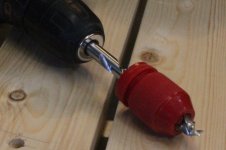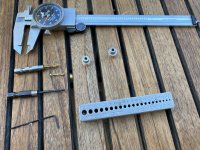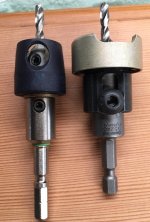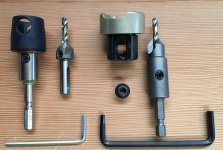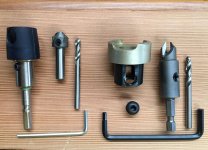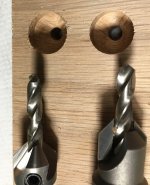I use these and they offer good results:https://www.leevalley.com/en-us/sho...2245-pair-of-plastic-drill-stops?item=86K6501
However, when I have two larger bits that I need a stop for, the smaller stop is not helping. I'd be interested in other non-marring stops.
However, when I have two larger bits that I need a stop for, the smaller stop is not helping. I'd be interested in other non-marring stops.

